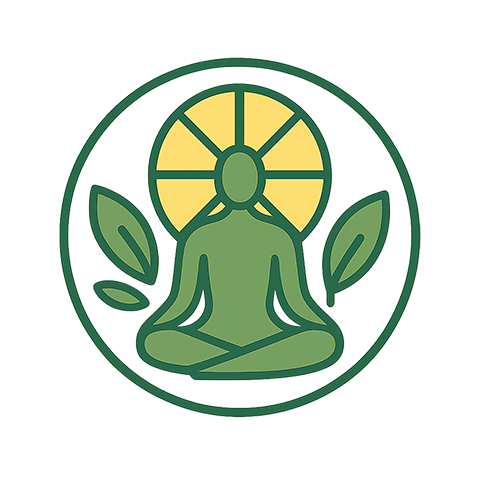Self-reflection on Digital Detox Human Over Technology
In an age where every notification feels urgent and every screen offers a new distraction, the practice of stepping back becomes an act of self‑reflection. By turning away from the relentless buzz of devices, we open a space to notice how technology shapes our moods, thoughts, and relationships. This article invites readers to pause, consider their digital habits, and explore a restorative path that honors both human connection and personal well‑being.
The Allure of Connectivity
Our devices promise instant access to information, social approval, and endless entertainment. The constant stream of updates can feel essential, as if missing a single alert could leave us out of sync with the world. Yet, this sense of indispensability often masks a deeper need: a craving for immediate affirmation and distraction from everyday challenges.
When we think of self‑reflection, we see a moment to step away from the noise and examine the underlying motivations for staying glued to screens. Are we truly connected, or merely chasing a digital echo of engagement?
Signs of Overload
Recognizing when technology becomes oppressive is the first step toward relief. Some common indicators include:
- Difficulty concentrating on tasks without the constant ping of an app.
- Feeling restless or anxious when separated from a phone.
- Relying on social media to gauge self‑worth or mood.
- Neglecting face‑to‑face conversations or outdoor activities.
- Frequent complaints of digital eye strain or headaches.
Each of these signs invites a question: Are these symptoms a result of our own choices, or are they imposed by the technology’s design?
The Restful Pause
A digital detox isn’t about rejecting technology entirely; it’s about creating intentional gaps where human experience can flourish. Restful pause allows the mind to recharge, fostering creativity and deeper emotional awareness. By consciously stepping back, we invite a new rhythm into our lives—one that prioritizes listening over replying, feeling over scrolling.
“Rest is not idleness; it is the quiet foundation for our next act.”
Benefits of a Digital Detox
Those who commit to a break from digital overload often report measurable improvements:
- Enhanced focus: Without constant interruptions, tasks become more manageable.
- Improved sleep: Reduced exposure to blue light helps regulate circadian rhythms.
- Greater presence: Being fully engaged in conversations or activities enriches quality of life.
- Emotional resilience: A slower pace encourages self‑reflection and better stress management.
- Healthier habits: More time for exercise, nutrition, and hobbies.
These outcomes underscore the value of intentionally carving out space for self‑reflection in a technologically saturated environment.
Practical Steps for a Digital Detox
Below is a step‑by‑step framework that can be adapted to individual needs and schedules:
- Set clear boundaries: Choose specific times or locations where devices are off limits, such as during meals or in the bedroom.
- Use built‑in tools: Many smartphones have “Screen Time” or “Digital Well‑being” features that track usage and set limits.
- Replace habits: Swap scrolling with a physical activity, reading a book, or journaling.
- Inform your network: Let friends and family know you’ll be less available so they respect your space.
- Reflect regularly: Keep a short journal entry after each detox period to evaluate feelings and adjust strategies.
Each step is designed to make the transition smoother and more sustainable, reinforcing self‑reflection as a core practice.
Mindful Tech Use
When technology is indispensable, the focus shifts from avoidance to intentional engagement. Mindful tech use involves:
- Choosing apps that truly serve personal or professional growth.
- Setting aside fixed times for checking emails or social media.
- Regularly reviewing notifications to ensure relevance.
- Embracing offline alternatives for tasks that do not require digital immediacy.
By curating our digital diet, we free up cognitive bandwidth for deeper reflection.
Reclaiming Human Interaction
Technology can enhance connection, but it can also dilute the richness of face‑to‑face communication. Strategies to reconnect include:
- Scheduling regular in‑person or video calls with loved ones.
- Participating in community groups or clubs that meet physically.
- Engaging in shared hobbies that do not involve screens.
- Setting aside moments for mindful listening during conversations.
These practices not only counterbalance digital reliance but also deepen our sense of belonging and authenticity.
Long‑Term Habits for Sustainable Balance
Adopting lasting changes requires consistent effort and self‑reflection. Consider the following habits:
- Morning and evening routines that exclude screens.
- Weekly “device‑free” days or hours.
- Mindful breathing or meditation sessions to anchor the mind.
- Regular physical activity that re‑energizes the body.
- Continuous learning about digital wellness and new technologies.
When integrated into daily life, these habits become the scaffolding that supports ongoing self‑reflection and well‑being.
Closing Reflection
Digital detox is not a one‑time event but a series of mindful pauses that invite self‑reflection into our modern rhythms. By recognizing the signals of overload, setting boundaries, and nurturing real‑world connections, we can reclaim the richness of human experience. The journey is personal and evolving, but each step away from endless scrolling brings us closer to a balanced life where technology serves, rather than governs, our humanity.


